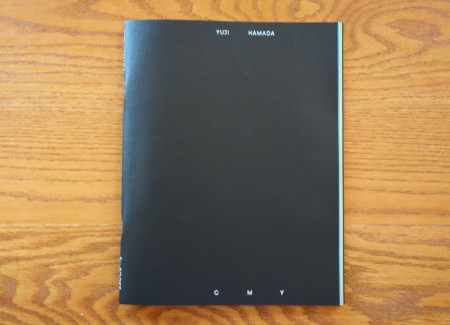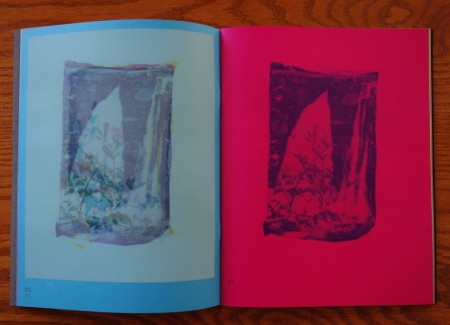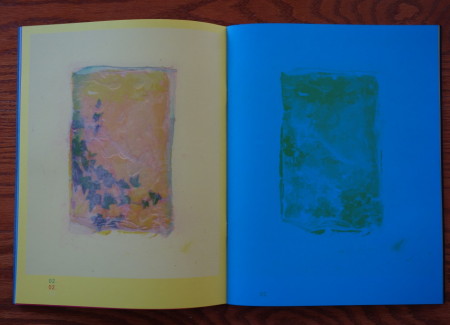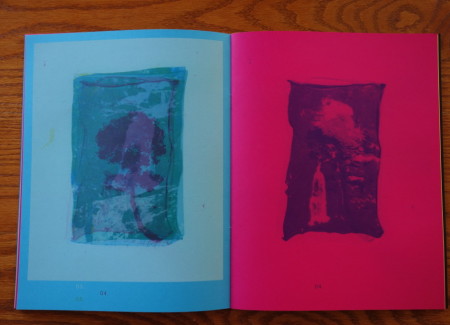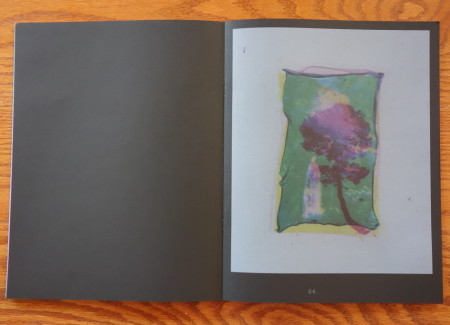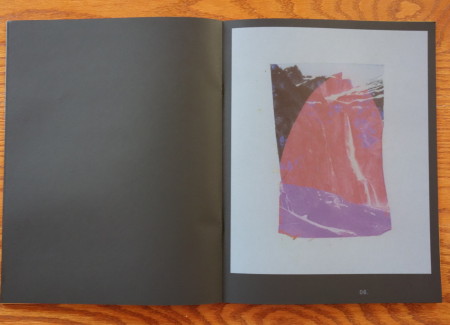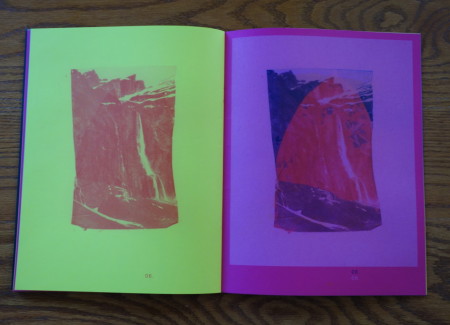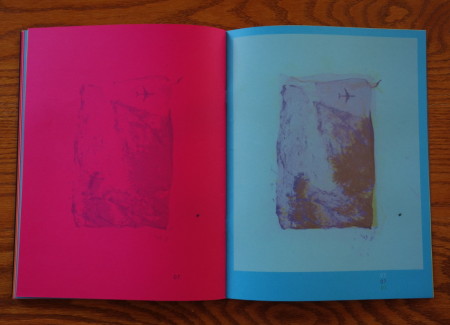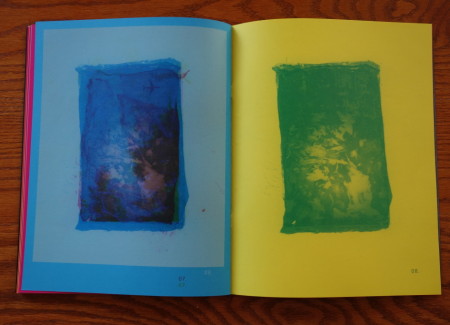JTF (just the facts): Published in 2015 by Fw: Photography (here). Stapled softcover, 64 pages, with 49 color reproductions, alternately printed on cyan, magenta, yellow, and black papers. There are no essays or texts. In an edition of 1500. Designed by Hans Gremmen. (Cover and spread shots below.)
Comments/Context: At a time when the definitional boundaries of photography have become increasingly permeable and malleable, deconstructing the medium has enjoyed a renewed burst of popularity. While others have delved into complex optics, digital software, or conceptual theory to reconsider what a photograph is (or has become), Japanese photographer Yuji Hamada has taken a more old school approach, physically pulling apart Polaroid emulsions with tweezers, breaking down simple color landscapes into their fragile component layers. Armed with these color separations, he has gone on to reassemble them in mismatched groups, creating new artworks that combine the imagery in filtered sandwiches. Small and delicate, they simultaneously interrogate how photography functions at a chemical level and offer surprisingly elegant and unexpected combinations.
The problem is that images of eight or ten of these tiny one-of-a-kind constructions don’t make for a very enlightening or even relevant photobook. Hamada’s works are about painstaking process, and that physicality comes through best when we can see the curled edges of the single color emulsions piled on top of each other and internalize the effort that has taken place to reach the final product. Simple reproductions don’t explain that complex tactile thinking very well.
So Yuji Hamada’s new photobook C/M/Y doesn’t operate like most photobooks – it’s more like a process-centric artist’s book, even though it has been produced in decent volume. As we know, Hamada’s final works are constructed from peeled away (and meticulously recombined) emulsions in three colors: cyan, magenta, and yellow. His photobook recreates those separations using colored inks, so each supporting scrim of cyan, magenta, or yellow is laid down separately, almost like a screen print. In the middle of the book, “final” images using all the colors are printed on black paper, reproducing the look and feel of his finished artworks.
What’s far more exciting are the images that surround these black pages. Using bold paper stocks in the same three primary colors (cyan, magenta, and yellow), Hamada has effectively created a matrix of possible combinations that he has edited down to representative or noteworthy iterations. Cyan and magenta separations can be printed on yellow paper, cyan and yellow on magenta, and magenta and yellow on cyan, and any image has all three component layers which can be used interchangeably. In its simplest form, this leads to a single color separation (say magenta) from a single image (say “number 02”) on a single colored paper (cyan). In more complex combinations, this might lead to multiple separations from multiple images (cyan from 04 with magenta from 05 plus others) on a single underlying paper. The perplexing numbers of the back cover are actually code for how these various iterations have been constructed.
Flipping through the pages of the photobook creates a sense of intellectual progression, as landscapes are stripped down to one layer and then built up with others. Single images pile up with misaligned color density, and multiple images merge and intermingle with each other. There is also an Albers-like color study effect going on, where a yellow separation on cyan paper looks green, or a cyan separation on magenta looks purple (a yellow separation on magenta should look somewhat orange, and it does, but it’s pretty hard to see). After a dozen pages, the subtlety in Hamada’s thinking starts to emerge, and we can see how a photograph can be both broken down and reconstructed with attention to these systematic color combinations. (As an aside, there’s a further level of photographic color theory going on in the spread shots above, as specific side by side combinations seem to tune the colors further.)
While many of Hamada’s works have an intimate ethereality, his multi-layer constructions test our definitions of photography with the most intelligence. Different separations in different colors unite as one, creating a stuttering multiple exposure effect that jumbles the original landscape information. Like Jessica Eaton, Hamada has unpacked the usually behind-the-curtain processing architecture of the medium and then reused it as a creative element rather than a purely technical one. His innovative photobook recreates that conceptual disassembly and reassembly, allowing the reader to follow his trail of colored breadcrumbs. The book is a clever physical manifestation of his careful artistic approach, where each page turn reveals the duality of photographic deconstruction and reconstruction he is exploring.
Collector’s POV: While Yuji Hamada has shown his work at both PGI (Photo Gallery International) and IMA Concept Store, he does not appear to have dedicated gallery representation at this time. As a result, those collectors interested in following up should likely do so via his website (linked in the sidebar).
